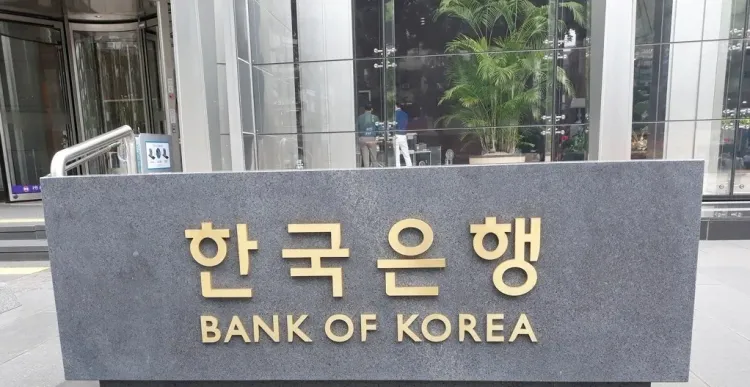How is BOK Monitoring Inflation Amid External Threats?

Synopsis
Key Takeaways
- Inflation is projected at 2%.
- External uncertainties include U.S. tariffs.
- Cash supply increased for Chuseok.
- Consumer prices rose 2.1% year-on-year.
- The holiday period is longer than usual.
Seoul, Oct 2 (NationPress) The Bank of Korea (BOK) has projected that inflation will remain stable at approximately 2 percent. However, high levels of uncertainty persist, driven by the United States' tariff policies and various geopolitical risks, as stated by the central bank on Thursday.
During a meeting to assess inflation trends, BOK Deputy Governor Kim Woong noted that recent government data indicated that consumer prices increased by 2.1 percent year-on-year in September, marking a return to the 2 percent threshold within a month, according to reports from Yonhap News Agency.
"The September figure aligns with previous forecasts as the temporary impact of reduced telecommunications fees concluded. Prices for agricultural, livestock, and fisheries products witnessed slower growth due to improved weather conditions and government measures aimed at stabilizing prices," Kim stated.
"Looking forward, we anticipate that prices will hover around the 2 percent mark; however, the BOK will continue to closely monitor inflation trends, given the increased volatility in exchange rates and oil prices amidst uncertainties related to U.S. tariff policies and geopolitical challenges," he added.
Additionally, the BOK announced on Thursday that it has provided more cash for this year's Chuseok holiday compared to the previous year, in response to heightened demand due to an extended holiday period and decreasing market interest rates.
During the past ten working days from September 19, the central bank injected 4.42 trillion won (approximately US$3.15 billion) in new currency into banks and financial institutions, marking a 17.9 percent increase from last year's holiday season figures, as reported by the BOK.
This larger cash supply corresponds with the current year's holiday period, which is longer than usual, falling between two national holidays—National Foundation Day on October 3 and Hangeul Day on October 9, which commemorates the Korean alphabet.
The increased cash demand is also attributed to declining market interest rates, as indicated by the BOK.
In total, the central bank issued 4.83 trillion won in cash and withdrew 307.8 billion won from circulation over the ten-day period, leading to a net issuance of 4.42 trillion won.









